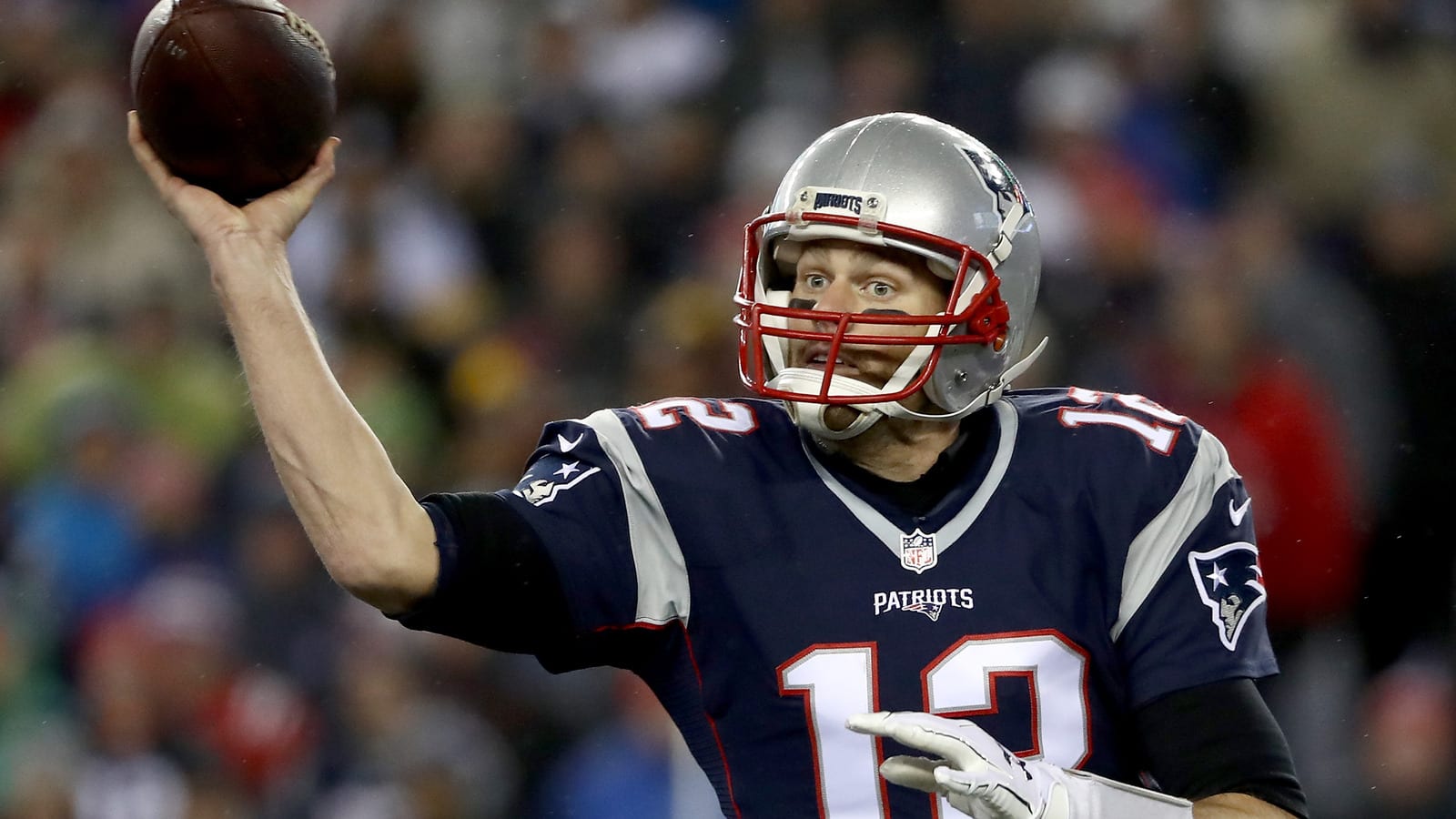
Aesthetic: The deep ball
The definitive play of the 2017 NFL postseason came during the second quarter of the AFC Championship Game. With the Patriots leading 10-6, Tom Brady gave the Patriots their first real cushion of the contest with a first down 34-yard flea-flicker touchdown pass to Chris Hogan. It wasn’t Brady’s longest throw of these playoffs, but it may have been his most gorgeous as it glided through the arena with an air-tight spiral that hit Hogan in stride just a yard before entering the end zone.
The deep ball is one of the most ostentatious plays in all of sports. It’s showy and fun while simultaneously complicated and unique. So much goes into the job of the quarterback, yet the play we enjoy the most is often the most difficult to complete. The myriad variables that go into the long ball – strength, precision, timing – coupled with the disruptive nature of the opposing defenses make the play one of the most beautiful in all of sport when executed to perfection, and in Super Bowl LI, two of the best in the game at throwing the deep ball will sit on opposite sidelines.

The deep ball is all about physics. It all starts with the quarterback’s throwing motion. Brady has one of the most consistent throwing motions in NFL history. According to Sports Science, Brady’s throwing motion only takes 0.39 seconds to release the ball no matter the distance of the throw. That consistency begins with creating a 90-degree angle in two places – his elbow and his armpit – before releasing the ball. For those of us playing backyard ball, we often use our arms as catapults, believing that if we lengthen our arms, we can put more power behind it. Instead, the longer the throwing motion, the slower the ball is coming out of your hands, sacrificing velocity. Keeping the ball high and creating a right angle at those two points keeps the throwing motion short and quick, allowing the ball the ball to zip right out of the hand of a guy like Brady.
Matt Ryan has come a long way to become one of the game’s better long ball throwers, and this year led the NFL in yards per attempt at 9.26, a full yard over Brady, who finished second in the league. Ryan has always been a very good quarterback, but after an offseason spent with Tom House and Adam Dedeaux, a pair of quarterback gurus who Brady had worked with in the previous three offseasons. The effect of House and Dedeaux were improved mechanics and a few yards added to his deep ball because of it. When you watch Ryan now, you watch a guy whose throwing motion finishes on a plane parallel with his spine, a release point that is consistent on every throw and a pair of shoulders perpendicular to his target.
For both men, the deep ball begins with the physics to move into the aesthetic. For the deep ball, the beauty lies in the accuracy, and accuracy begins and ends with trust. There’s a story about Steve Young still learning how to lead the 49ers in 1991. After missing a wide open Jerry Rice, offensive coordinator Mike Holmgren asked Young why the ball didn’t go to the best wide receiver in the league. Young explained that it was hard for him to see over the offensive linemen on deep passes standing at only 6-foot-1. Holmgren told young that Rice was right where he was supposed to be and that he needs to trust Rice enough to deliver it there, even if he can’t see his receiver.
While Brady and Ryan have no issues seeing over the line (both men are listed at 6-foot-4), trust is still just as important as mechanics. There’s a certain elegance that comes with seeing a ball dropped into a receiver’s hands in stride. It’s a continuation of an action, execution at its peak. Stride comes with strength, timing and repetition, but stride also comes with trust – the trust that your receiver will make the effort to go get the ball, the trust that your receiver will concentrate on bringing it in before thinking about the end zone. For Brady, that trust feels natural. There is no one better at hitting a receiver running full speed up the seam.
Go back to Brady’s Week 14 79-yard touchdown throw to Hogan against the Ravens. Hogan, deep behind Baltimore’s entire secondary, didn’t need to make a single body adjustment. He just watched as the ball fell beautifully into his hands. For Ryan, the epitome of his deep ball came during Week 6 against the Seahawks with a picture-perfect throw to Julio Jones to his outside shoulder as he approached the end zone.
Football is all about winning, and winning is often a constituent of good quarterbacking, and good quarterbacking should be inherently beautiful. When a Brady or Ryan set their feet and prepare to launch, the ball emigrates from their hands to our imagination. We don’t know what’s at the other end of the exchange, and as the ball flies through the air, the beauty is in the anticipation. There should be a lot of this in Super Bowl LI, and more than anything else, these completions are what we’ll remember not on Monday morning, but decades from now looking back on the game.
More must-reads:
- How Tom Brady’s numbers continue to improve as Patriots QB gets older
- Matt Ryan sheds light on admiration for Tom Brady before Super Bowl LI
- The 'QBs drafted in the top 10 to never make a Pro Bowl' quiz
Breaking News
Customize Your Newsletter
 +
+
Get the latest news and rumors, customized to your favorite sports and teams. Emailed daily. Always free!

